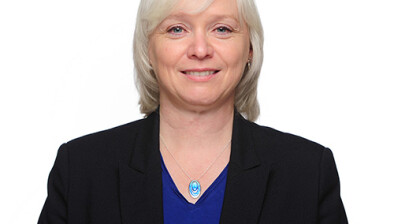Ross Stupart: Will Scottish Government dampen higher earners’ Christmas spirit?

Ross Stupart
Taxation expert Ross Stupart gives insight into what high earners may expect from the Scottish Government’s forthcoming budget — expected on 15 December.
As the UK Government reduces the threshold for the 45% income tax rate to £125,140 (from £150,000) there’s a reasonable chance the top rate threshold will reduce further in Scotland towards £100k when the Holyrood budget is unveiled on 15 December.
Recently the Scottish Government announced cuts to spending plans of almost £1.2bn. John Swinney announced these cuts were required as inflation means the Scottish Budget is worth around £1.7bn less than last year.
The UK Government announced that spending decisions in its Autumn Statement will result in an increased block grant allocation of £1.5bn for Scotland over the next two years. But it’s clear the Scottish Budget will remain under strain.
Before considering what’s in store for Scottish taxpayers, lets remind ourselves of the taxes devolved to Scottish Government, and the changes UK Government made in the 2022 Autumn Statement:
| Devolved tax | 2022 UK Budget developments |
| Income tax | Highest rate income tax (45%) reduced from £150,000 to £125,140. Personal allowance and income tax rate bands frozen to April 2028. Income tax rates remain the same. |
| Land & Buildings Transaction Tax (LBTT) | UK equivalent (SDLT), 0% band to apply to main residential property up to £250k from £125k 0% band extended to £425k (was £300k) for first time buyers |
| Business Rates | Increased retail, hospitality and leisure sector support, increasing rates relief from 50% to 75% (up to £110k) |
What’s in store for Scottish taxpayers?
Any changes are likely to be on income tax, as this is the Scottish Government’s most effective taxing tool.
Scotland currently has five rates of income tax compared to England’s three. In England, earnings above £50,270 are taxed at 40%. This will remain until April 2028, meaning more taxpayers will fall into higher tax rates as salaries increase. The highest rate of income tax in England of 45% now applies to earnings over £125,140. In Scotland, earnings over £43,662 attract 41% income tax and over £150,000 attracts 46%.
John Swinney has some difficult decisions to make regarding Scottish Income Tax policy. Applying the UK’s approach of increasing tax by freezing thresholds, will mean the Scottish Government taking the same steps they criticised the UK Government for.
Given the 10% increase in National Minimum Wage levels, anyone working in those roles over the age of 20 will pay tax at 19% and 20% on part of their earnings. If the Scottish Government wants to benefit lower income earners, increasing the starter rate threshold of 19% to a full-time role national minimum wage equivalent could help. Otherwise, there’s little point having the starter rate.
This move would also have a small positive impact on middle income earners, meaning Mr Swinney could seek to freeze basic rate (20%) and intermediate rate (21%) thresholds, but still say he’s given something back to many taxpayers to alleviate inflationary pressures. How much such a move would cost is unknown, and such steps would need costing.
One likely step will be reducing the top rate (46%) tax threshold, but by how much? Does John Swinney align to the UK Government announcement, reducing the threshold to £125,140? That appears the simple option, however the Scottish Government’s conundrum is that a much smaller population of taxpayers would be dragged into paying the highest rate of income tax relative to England.
Following the UK Government approach may leave the Scottish Government budget worse off, due to the way block grant deductions operate to account for devolved taxes, and fewer taxpayers are likely to be pulled in to paying the top rate of tax. To balance the books and align with Scottish political rhetoric, the top rate threshold is reduced below the £125,140 UK Government announcement, perhaps to £100k or £110k.
Such a move risks higher earners taking themselves and their earnings out of Scotland. The move would likely land well with many voters, but the decision for higher earners is whether the higher public spending per head in Scotland provides higher quality public services to justify the tax burden.
Regarding Land and Buildings Transaction Tax (LBTT), the Scottish Government will likely follow the UK Government in increasing the value of a property purchase that is LBTT exempt.
Currently a residential property with a value up to £145k has no LBTT. To alleviate the cost of home ownership as interest rates increase, and to maintain demand in the housing sector, we expect the Scottish Government to move the LBTT 0% threshold from £145k to align with the new UK £250k SDLT 0% threshold.

Ross Stupart is RSM UK’s head of tax for Scotland & NI







